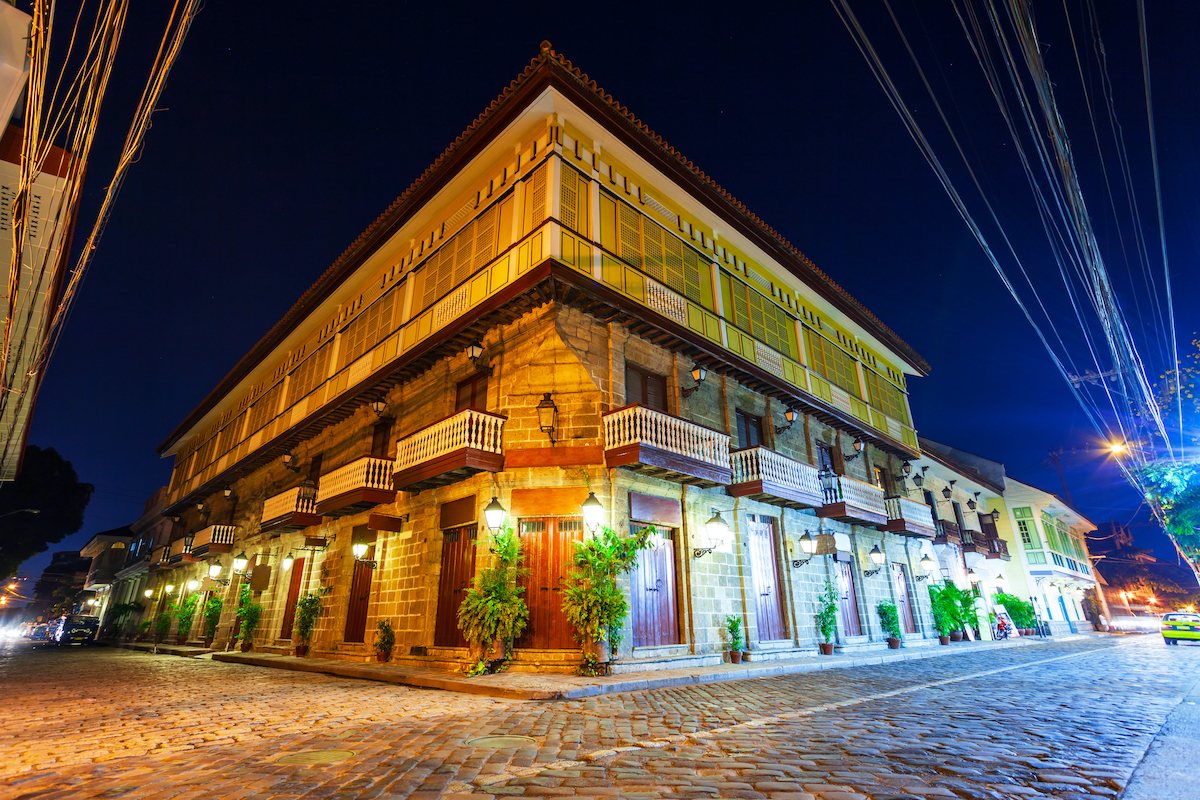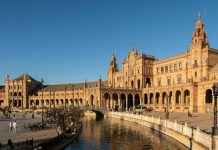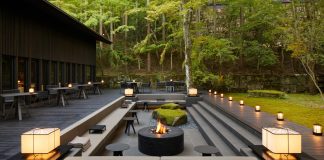Casa Manila Museum in Intramuros
Casa Manila Museum is a living museum situated in the center of Intramuros, Manila that provides a glimpse into the life-style of the affluent Filipino family in the course of the late Spanish colonial period. The museum is a reproduction of a grand Nineteenth-century mansion decorated and furnished in authentic period style, showcasing the social history of Manila in the course of the Spanish Colonial era. The façade of Casa Manila was patterned after a house that when stood at Jaboneros Street within the Chinese district of Binondo within the 1850s.

The museum is a preferred tourist spot in Intramuros, opposite the San Agustin Church. It’s one among the 4 original villages of Intramuros and is situated across historic San Agustin church and bounded by Calle. The museum is the imposing stone-and-wood structure c. 1850, one among the grand houses in Barrio San Luis. It recreates the wealthy merchant’s way in the course of the Spanish colonization, showcasing period furniture coming from Chinese, European, and Philippine origins.
History of Casa Manila Museum
Establishment
Casa Manila Museum is a living museum situated in Intramuros, Manila that showcases the life-style of an affluent Filipino family in the course of the late Spanish colonial period. The museum was established in 1981 and was opened to the general public in 1983. It was built by the Intramuros Administration, a government agency tasked with preserving and developing the historic walled city of Intramuros.
The museum was built on the location of a former Spanish colonial house that was destroyed in the course of the Battle of Manila in 1945. The façade of Casa Manila was patterned after a house that when stood at Jaboneros Street within the Chinese district of Binondo within the 1850s. The museum’s interior was designed to reflect the life-style of a wealthy Filipino family in the course of the Spanish colonial period.
Evolution Over the Years
Over time, Casa Manila Museum has undergone several renovations and enhancements to reinforce the visitor experience. In 1998, the museum underwent a significant renovation to repair damage brought on by the 1990 earthquake. The renovation included the installation of recent air con units, latest lights, and replacing damaged flooring.
In 2008, the museum underwent one other renovation to update its exhibits and improve its facilities. The renovation included the installation of contemporary audio-visual equipment, latest display cases, and the addition of interactive exhibits.
Today, Casa Manila Museum is one among Intramuros’s hottest tourist attractions, attracting 1000’s of holiday makers annually. The museum offers visitors a glimpse into the life-style of a wealthy Filipino family in the course of the Spanish colonial period. It’s a testament to the wealthy cultural heritage of the Philippines.
Architectural Design of Casa Manila Museum
Casa Manila Museum is a living museum that showcases the life-style of an affluent Filipino family in the course of the late Spanish colonial period. The museum is situated in Intramuros, one among the 4 original villages of Manila, Philippines. The architectural design of Casa Manila Museum is a reproduction of the San Nicolas House that when stood on Calle Jaboneros in Binondo, Manila, in the course of the 1850s.
Exterior Design
The outside design of the Casa Manila Museum is a mixture of Spanish and Filipino architectural styles. The façade of the museum is patterned after a grand house that when stood within the Chinese district of Binondo. The imposing stone-and-wood structure of Casa Manila Museum stands out among the many other period houses within the Plaza San Luis Complex.

The museum’s exterior design contains a large wood door that results in the major entrance. The door is surrounded by intricately designed wrought-iron grills that add to the grandeur of the home. The museum’s windows are product of capiz shells, which permit natural light to enter the home while providing privacy to the occupants.
Interior Design
The inside design of the Casa Manila Museum is a mixture of Filipino, Spanish, and Chinese influences. The museum’s three floors feature different rooms that showcase the life-style of an affluent family in the course of the Spanish colonial period. The rooms are furnished with local and imported antique pieces from the Intramuros Administration Museum Collection.
The museum’s first floor contains a grand sala, a dining room, and a kitchen. The grand sala is a spacious room serving guests as a reception area. The room has antique furniture, including a big wood table, chairs, and a grand piano. The dining room is where the family and guests would have their meals. The room contains a large wood table, chairs, and a chandelier.


The museum’s second floor features the family’s bedrooms and a chapel. The bedrooms are furnished with antique beds, dressers, and other furniture. The chapel is a small room that serves as a spot of worship for the family.
The third floor of the museum contains a ballroom and a balcony. The ballroom is a spacious room that serves as a venue for social events. The room has antique furniture, including a big wood table, chairs, and a grand piano. The balcony provides a panoramic view of the encompassing area.
The architectural design of the Casa Manila Museum is a mixture of Spanish, Filipino, and Chinese influences. The museum’s exterior and interior designs showcase the grandeur and opulence of an affluent family in the course of the Spanish colonial period.

Exhibits at Casa Manila Museum
Casa Manila Museum is a living museum that showcases the colonial lifestyle in the course of the Spanish colonization of the Philippines. The museum is housed in a grand stone-and-wood structure in-built the 1850s, one among the grand houses in Barrio San Luis, one among the 4 original villages of Intramuros.
Everlasting Exhibits
The museum features 4 floors of superbly curated exhibits on Filipino culture, art, and history. At the center of the gathering is an excellent showcase of the colonial lifestyle in the course of the Spanish era. Visitors can explore the home’s different rooms, including the sala, comedor, cocina, and cuarto.
The sala contains a collection of antique furniture, including a grand piano, a sofa, and a chandelier. The comedor showcases the dining room with a protracted wood table, antique chairs, and a silverware collection. The cocina contains a traditional kitchen with a big hearth, earthenware pots, and wood utensils. The cuarto showcases the master suite, complete with a four-poster bed, antique vanity, and a group of antique clothing.
Special Exhibits
Along with the everlasting exhibits, Casa Manila Museum also hosts special exhibits all year long. These exhibits feature a various range of topics related to Filipino culture, art, and history. The exhibits change repeatedly, so visitors can at all times expect to see something latest and exciting.
A number of the past special exhibits have included “Filipino Food: From Roots to Fusion,” which explored the history and evolution of Filipino cuisine, and “Baybayin: The Forgotten Script,” which showcased the traditional Filipino writing system.
Cultural Significance of Casa Manila Museum
Casa Manila Museum is a living museum situated in Intramuros, Manila, that showcases the life-style of an affluent Filipino family in the course of the late Spanish colonial period. The museum’s façade was patterned after a house that when stood at Jaboneros Street within the Chinese district of Binondo within the 1850s. The imposing stone-and-wood structure c. 1850 is one among the grand houses in Barrio San Luis, one among the 4 original villages of Intramuros. The museum is bounded by Calle Real, General Luna, Cabildo, and Urdaneta streets, across historic San Agustin Church.
The museum is important to the Filipino culture because it provides a glimpse into the country’s colonial past. It’s a testament to the Philippines’ wealthy history and cultural heritage in the course of the Spanish colonial period. The museum showcases the architectural design, antique furniture, and furnishings of Philippine, Chinese, and European origins, that are a testament to the country’s diverse cultural influences.
Casa Manila Museum can be significant for its role in promoting the country’s tourism industry. The museum attracts local and international tourists curious about learning in regards to the country’s wealthy cultural heritage. The museum’s exhibits provide a singular and immersive experience that enables visitors to step back in time and experience the life-style of an affluent Filipino family in the course of the Spanish colonial period.
Furthermore, the museum houses several events and exhibitions annually, further promoting the country’s cultural heritage. These events include traditional Filipino dances, music, and art exhibits, which offer visitors with a deeper understanding of the country’s unique and diverse culture.

Visitor Information
If you happen to plan to go to the Casa Manila Museum, here’s what you have to learn about its opening hours, admission fees, location, and accessibility.
Opening Hours
The Casa Manila Museum is open from Tuesday to Sunday, from 9:00 AM to six:00 PM. Note that the museum is closed on Mondays. Visitors are advised to reach at the least an hour before closing time to permit ample time to explore the museum.
Admission Fees
The museum charges an entrance fee of PHP 75.00 for normal visitors and PHP 50.00 for college students and senior residents. Children under the age of 4 can enter free of charge. Group tours can be found, but reservations are required for groups of ten or more.
Location
The Casa Manila Museum is situated within the Plaza San Luis Complex, on the corner of General Luna and Real Streets in Intramuros, Manila. The museum is well accessible by automobile or public transportation. Visitors can take a taxi or ride a jeepney or tricycle to get to the museum.
Accessibility
The museum is wheelchair accessible, with ramps and elevators available for visitors with disabilities. Nevertheless, note that the museum has several levels, and visitors with mobility issues might have to take several flights of stairs to explore the complete museum. Visitors should wear comfortable shoes and clothing because the museum can get quite warm and humid.
Casa Manila Museum in Popular Culture
Casa Manila Museum has been featured in various types of popular culture, including movies, TV shows, and literature.
Within the 2015 historical drama film “Heneral Luna,” Casa Manila was used as a filming location for several scenes. The film depicts the lifetime of General Antonio Luna, a Filipino revolutionary general who fought against American colonization within the late Nineteenth century. Casa Manila’s period furniture and architecture helped to create an authentic atmosphere for the film’s setting.
The museum has also been featured in local television shows similar to “Maalaala Mo Kaya” and “Ipaglaban Mo.” Casa Manila was used as a backdrop for period dramas and historical reenactments in these shows.
In literature, Casa Manila has been mentioned in several books and travel guides. The museum’s impressive antique furniture and decor collection has been praised by travel writers and historians alike. In Lonely Planet’s “Philippines Travel Guide,” Casa Manila was described as a “meticulously restored Nineteenth-century mansion” that “offers a glimpse into the lives of the rich and powerful in the course of the Spanish colonial era.”
Continuously Asked Questions
What are the opening hours of Casa Manila Museum?
Casa Manila Museum is open from Tuesday to Sunday from 9:00AM to six:00PM. It’s closed on Mondays.
What are a few of the artworks displayed at Casa Manila Museum?
Casa Manila Museum depicts the colonial lifestyle in the course of the Spanish colonization of the Philippines. Visitors can see various artworks, including religious paintings, antique furniture, and home goods that represent the affluent lifestyle of the Spanish aristocracy.
What’s the contact variety of the Casa Manila Museum?
Visitors can contact Casa Manila Museum at +632 527 4084 for inquiries and reservations.
Where is the situation of Casa Manila Museum?
Casa Manila Museum is situated within the Plaza San Luis Complex, General Luna cor. Real Sts., Intramuros, Manila. It is well reachable by jeepney or taxi.
What’s the history of the Casa Manila Museum in Tagalog?
Ang Casa Manila Museum ay isang museo sa Intramuros na nagpapakita ng marangyang buhay noong panahon ng pananakop ng mga Kastila sa Pilipinas. Ito ay itinayo noong Nineteen Eighties upang ipakita ang kasaysayan at kultura ng Intramuros.
Why is Casa Manila Museum value visiting?
Casa Manila Museum is a must-see for those curious about history, architecture, and Philippine heritage. It offers a glimpse of the affluent lifestyle of the Spanish aristocracy in the course of the colonial period. The museum’s collection of antique furniture, religious paintings, and home goods are well-preserved and supply a singular insight into the country’s past.
Manila Travel and Tour Packages
Want more updates about latest package tours and tourist attractions in Manila, Philippines, that you may add to your itinerary?
Follow the if you happen to want more travel and food-related updates.
Read:
Unlock the world’s wonders with unforgettable journeys tailored just for you! Whether you crave sun-kissed beaches, thrilling adventures, or rich cultural escapes, your dream destination awaits. Enjoy seamless travel with expert tips, exclusive deals, and handpicked experiences that Turn Every Trip into a lifetime memory.










